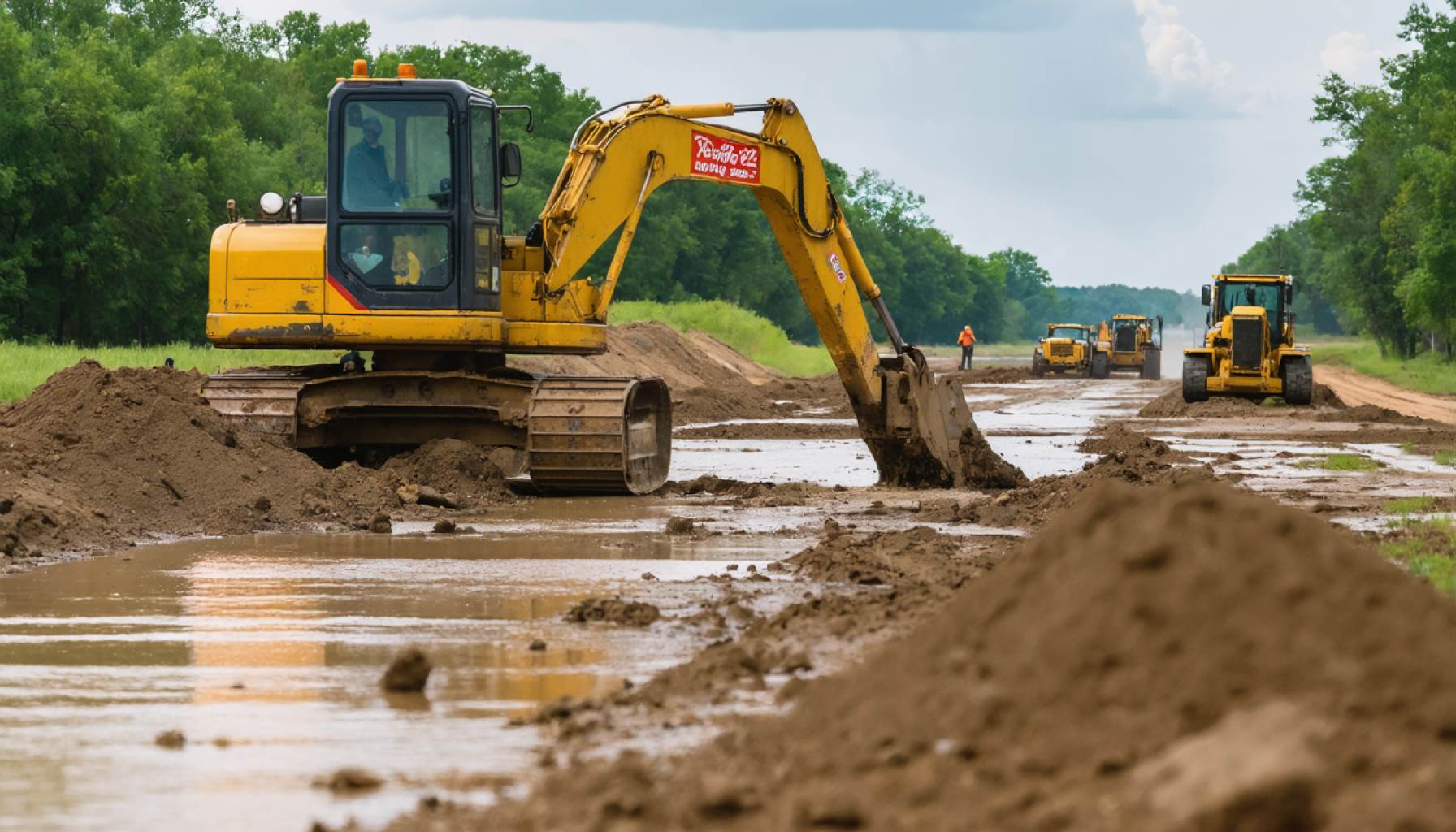- A water well drilling in Brenham, Texas, led to an unintended release of hydrogen sulfide gas, prompting emergency protocols.
- The city’s emergency sirens urged nearby residents to shelter in place due to the gas’s hazardous potential.
- Brenham’s Fire Department responded quickly to contain the leak, coordinating with Washington County Emergency Management and College Station reinforcements.
- Hydrogen sulfide, a colorless gas, poses serious health risks, including nausea, respiratory distress, and fatalities at high concentrations.
- The wellhead was successfully sealed, stopping the gas escape and allowing officials to lift the shelter order safely.
- This incident highlights the need for vigilance and preparedness in managing hidden environmental risks.
- The community’s quick response serves as a reminder of both the power and unpredictability of nature beneath the earth’s surface.
Under the vast Texan sky, beneath the everyday quiet of Brenham’s landscape, a covert encounter unfolded, tethering attention to the unmentioned threats lying beneath our feet. On an ordinary Maroon morning, tranquility dissolved as the city’s emergency sirens pierced the air, prompting a swift shelter-in-place order for residents nestled near Oil Field Road.
A water well drilling endeavor, meant to harness the lifeline of nature, descended into chaos as workers inadvertently tapped into the acrid abyss of hydrogen sulfide—a silent venom known for its distinctive, sulfurous kiss. The encounter with this colorless specter, whispering its lethal potential, transformed the unearthed soil into a stage of peril.
Brenham’s Fire Department, donning their gear reflective of the urgency, anchored themselves at 9920 Oil Field Road, grappling with the escaping materials intent on veiling the vicinity with danger. As the gas slithered into the atmosphere, local officials swiftly coordinated with the Washington County Office of Emergency Management to deploy reinforcements from neighboring College Station, bolstering efforts to contain the invisible threat.
The narrative of hydrogen sulfide unfolds as one of quiet peril—a gas whose innocent beginnings belie its menacing nature at heightened concentrations. Instant nausea, respiratory distress, and even fatalities attend unchecked encounters with H2S, demanding respect and vigilance—a reminder of nature’s unpredictable reserve lurking beneath.
The swift response from the emergency teams culminated in decisive action: the wellhead was plugged, sealing the subterranean menace and halting further gas release. With hazardous readings regressing to safety, the officials prudently lifted the shelter-in-place order, though not without leaving a solemn reminder for Brenham’s residents—a testament to the hidden hazards that often lie beneath the most benign efforts.
This episode unfurls a broader narrative of vigilance and preparedness in community safety protocols—a clarion call to respect and prepare for the unpredictable dialog with the earth’s hidden recesses. As Brenham resumes its regular rhythm, the incident underscores the dual reality of innovation and inadvertence, etched in the dusty canvass of Texan grit and resilience.
Unseen Dangers Beneath Our Feet: Lessons from Brenham’s Hydrogen Sulfide Incident
The Hidden Risks of Drilling: Lessons from Brenham
In Brenham, Texas, a drilling endeavor gone awry shed light on hidden threats beneath our feet. This critical incident involving the release of hydrogen sulfide (H2S) gas serves as a wake-up call regarding the unpredictable challenges posed by earth’s concealed reserves. Let’s delve deeper into the implications, mitigation measures, and industry best practices relevant to this silent intruder.
Understanding Hydrogen Sulfide Risks
Hydrogen sulfide, known for its “rotten egg” odor, is a colorless gas prevalent in natural gas and crude oil production sites. While low levels of H2S are common in nature, elevated concentrations present severe health risks, including:
– Respiratory distress
– Instant nausea
– Loss of consciousness
– Fatalities in high concentrations
According to the Occupational Safety and Health Administration (OSHA), exposure limits for hydrogen sulfide should not exceed 20 parts per million (ppm) to ensure safety.
Preventive Measures and Community Safety Protocols
To prevent such incidents, companies can adopt stringent preventive measures:
1. Regular Monitoring and Detection Systems: Install advanced H2S detection systems in drilling sites to provide immediate alerts in case of leaks.
2. Emergency Preparedness Training: Equip workers and local communities with emergency response training, ensuring a quick and efficient response to potential hazards.
3. Integrated Ventilation Systems: Deploy robust ventilation systems to disperse accumulated gases safely away from inhabited areas.
Hydrogen Sulfide Incident Case Studies and Comparisons
The Brenham incident is not isolated. Similar occurrences underscore the importance of continued vigilance:
– Lake Peigneur, Louisiana (1980): A drilling mishap caused the lake to drain, illustrating the consequences of geological oversight.
– Tioga, North Dakota (2014): An H2S exposure resulted in environmental repercussions and the revisiting of safety protocols.
Regulatory Insights and Industry Trends
With incidents like Brenham’s spotlighting underlying risks, stricter regulations are emerging:
– Enhanced Safety Regulations: More stringent industry guidelines are anticipated, focusing on safety protocols, worker training, and equipment standards.
– Technological Innovations: Emerging technologies like AI-enhanced detection systems are being explored to predict and mitigate risks effectively.
Expert Opinions and Recommendations
Industry experts advocate for a balanced approach to resource extraction and public safety. Incorporating community feedback into drilling project plans can enhance trust and ensure safety.
Actionable Recommendations for Communities and Operators
– Stay informed about local drilling activities and potential risks.
– Participate in community safety and awareness programs.
– Advocate for stringent local environmental assessments before drilling approvals.
Conclusion: Vigilance and Preparedness – Keys to Coexistence
While drilling activities continue to be a vital aspect of energy production, the Brenham incident highlights the critical need for vigilance and preparedness. Communities must demand transparency and robust safety measures to coexist safely with these initiatives.
For more insights and information on safety protocols in oil and gas exploration, visit the OSHA website.
